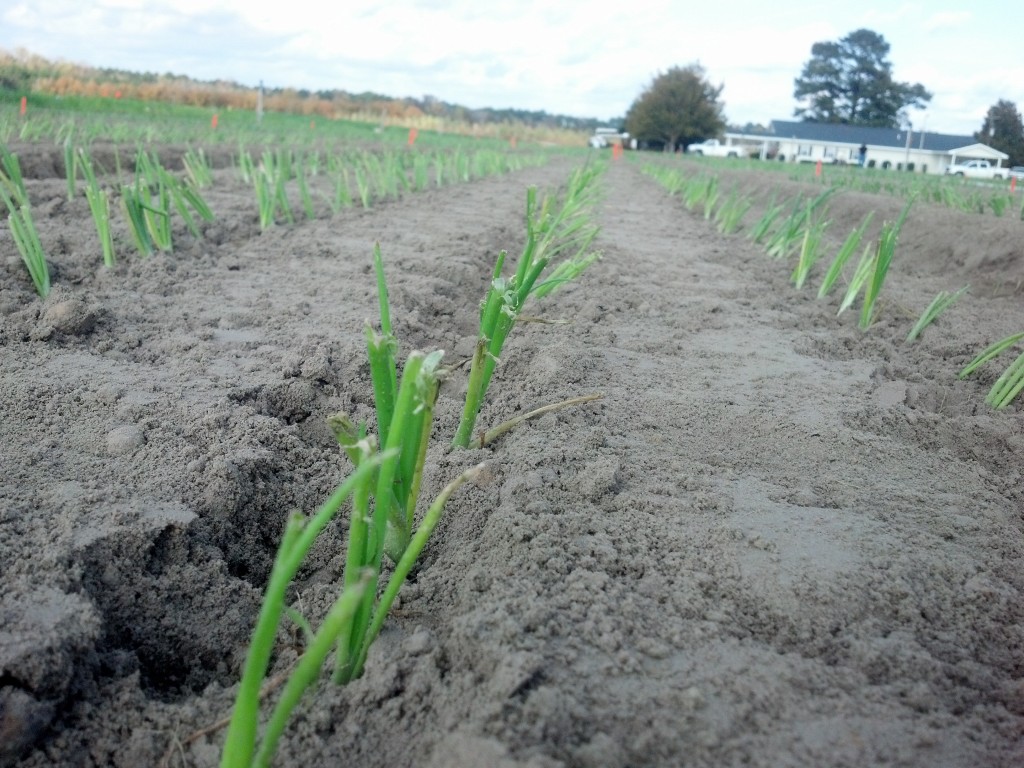Nematodes are small microscopic roundworms that inhabit the soil and can have a large effect on the growth and successful production of many crops. Nematodes can cause damage by feeding on the roots of susceptible crops. Root damage can cause stunted growth and inhibit water and nutrient uptake, which can hurt yields. There are many species of plant-parasitic nematodes, some of which have a greater effect on various crops than others. Some of the nematodes that are significant to the crops grown in our area include the southern rootknot, peanut rootknot, soybean cyst, and sting nematodes. Each species of nematode varies in their effect and damage on various crops. Damage from root-knot nematodes can cause visible swelling and galling of roots. Some nematode species do not cause visible root damage, but can cause plants to be stunted. Generally rootknot nematodes can be a bigger problem in sandier soils than in heavier soils. Many times there are hotspots of nematodes in a field that can cause localized plant stunting. Plants are generally more affected during the seedling and establishment stages as early damage to the plant root system can have season-long effects. Doing all that can be done to promote good plant growth and reduce plant stress can help minimize nematode damage. For many crops there are established economic thresholds above which the population levels of nematodes are considered to be damaging and justifying of the cost of treatment. It is important to know the particular species of nematode that you have in a field in order to know how to manage the problem. This can be determined having a nematode assay run for your soil to determine nematode species and population levels. Generally, the best time to test for nematodes is in the fall and toward the end of the production season of the particular crop that you are growing. At harvest, nematode levels will be highest then as the populations increase during the growing season. Testing at the wrong time of the year or not following proper testing procedures could potentially mask a problem as the nematodes can be hard to find, or may die while being transported to the nematode lab for testing. If damaging levels of nematodes are present, then there are several things that can be done that I will briefly mention. Rotating to a non-host crop of the particular species of nematode that you have a problem with will help a lot in reducing population levels. From a nematode point of view, if you have the southern root-knot in cotton, then peanut would be the best rotation as it is not affected by this nematode. If you have the peanut root-knot, then cotton would be a good rotation as it is not susceptible to it. Corn, in general, is an excellent rotation for peanut, but it is a mild host of the peanut root-knot. The soybean cyst nematode has a narrow host range as it mainly affects soybeans. A rotation away from soybeans to another row crop would help reduce levels. Soybean is also very susceptible to the southern root-knot. Corn is also susceptible to the southern root-knot. It greatly helps in managing the problem to know the species of nematode you’re dealing with. Options for control, other than rotation, would be to plant a nematode resistant variety, use a seed treatment nematicide, or use a nematicide such as Velum Total or Telone II. Choice of product would depend on the crop and population levels. It is worth noting that the nematode resistant cotton variety Delta Pine 1558NR B2RF was the second highest yielding variety in the UGA statewide county cotton variety trials and looks to be worth consideration for fields under southern root-knot nematode pressure. Concerning vegetables, many types of vegetables are susceptible to many species of rootknot nematodes. Other significant nematodes for vegetable are the sting, reneform, and cyst. UGA has established threshold levels for when to treat for nematodes in vegetables. Telone II is generally considered to be the best treatment for nematodes in Vegetables. It is worth mentioning that 2003 UGA/USDA research showed that onions are much more susceptible to economic damage levels from nematodes when they are direct seeded than they are after transplanting. In other words, it would take much higher levels of nematodes to damage transplanted onions than it would to damage seeded onions.
A website from UGA Cooperative Extension

Local News for 4-H, Agriculture, and Family and Consumer Science